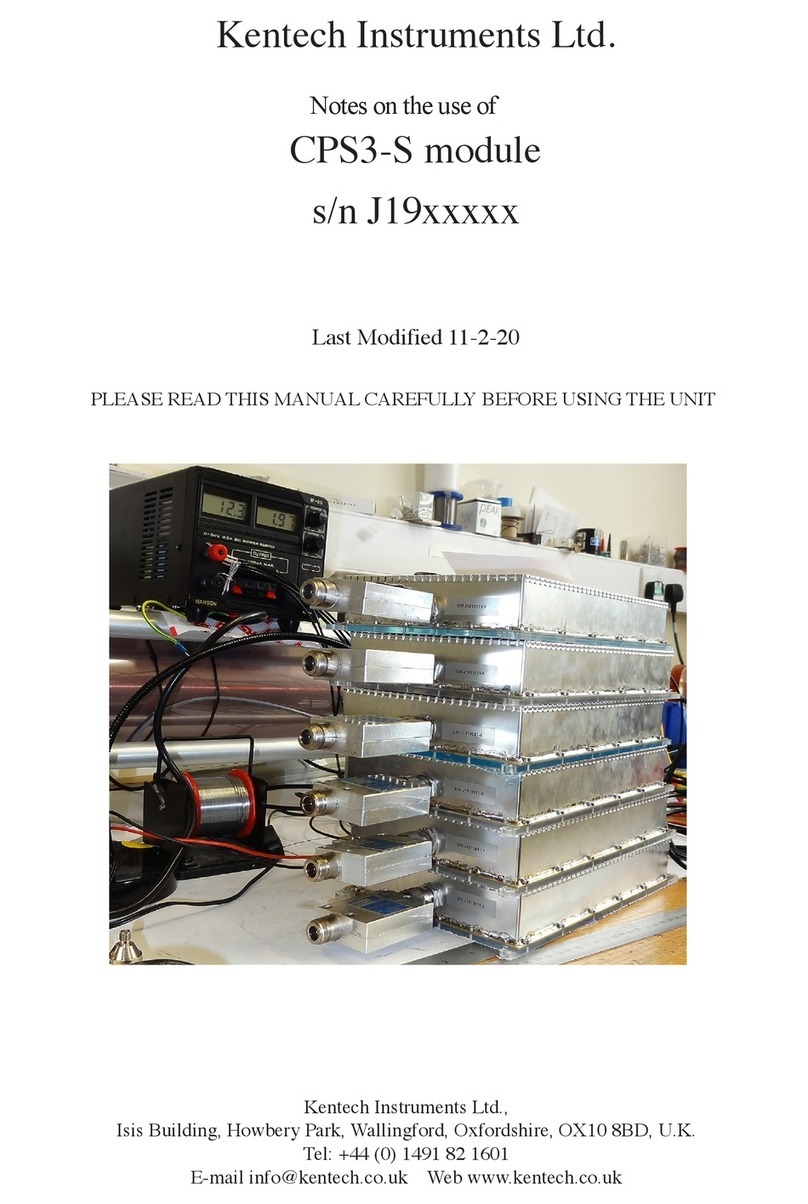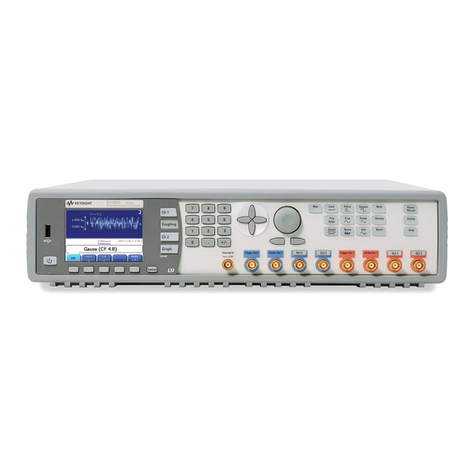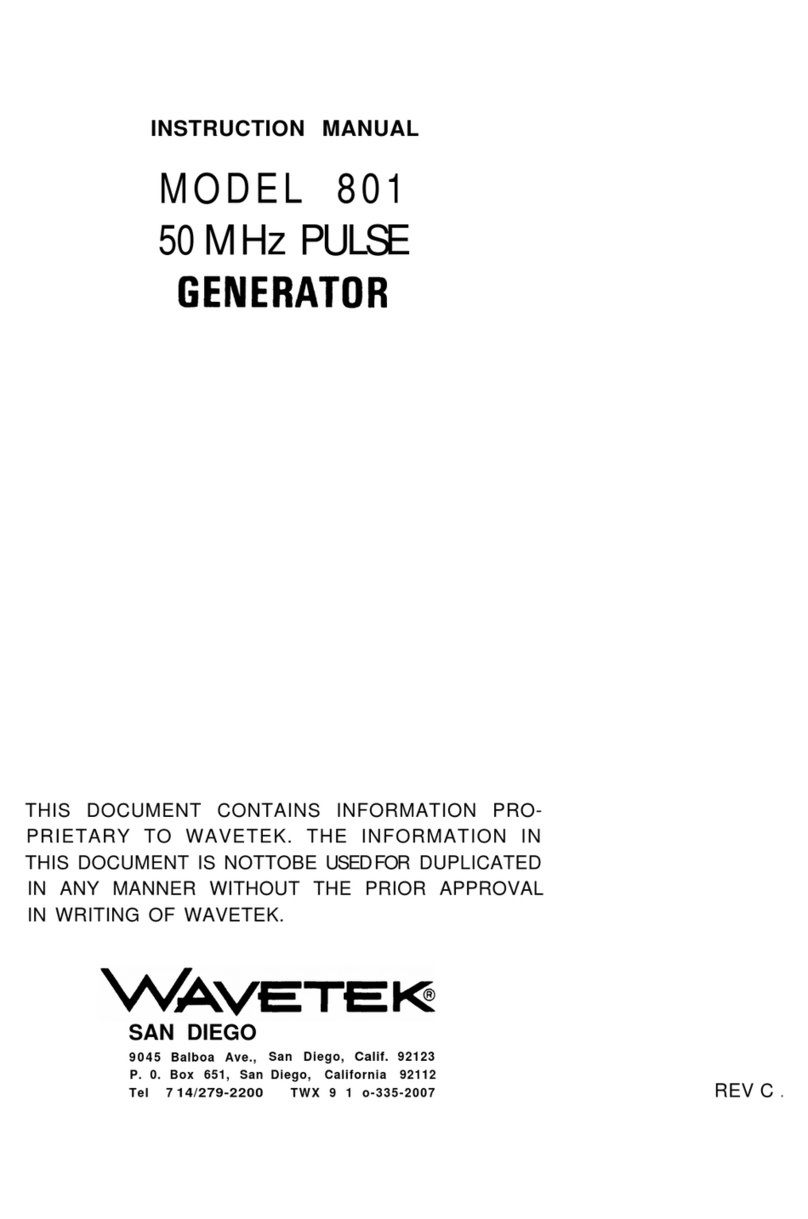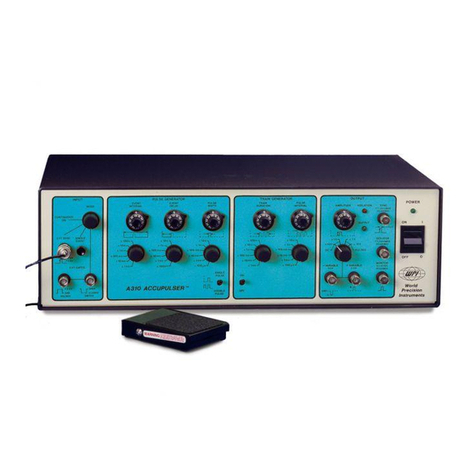Kentech Instruments Pulse Chopper System User manual

1
Kentech Instruments Ltd., Unit 9, Hall Farm Workshops, South Moreton, Didcot, Oxon, OX11 9AG, U.K.
10th. July 1999
Unit 9, Hall Farm Workshops, South Moreton, Didcot, Oxon, OX11 9AG, U.K.
Kentech Instruments Ltd.
Pulse Chopper System
J99*****
10th. July 1999
PLEASE READ THIS MANUAL CAREFULLY BEFORE USING THE PULSER

2
Kentech Instruments Ltd., Unit 9, Hall Farm Workshops, South Moreton, Didcot, Oxon, OX11 9AG, U.K.
10th. July 1999
DISCLAIMER
This equipment contains high voltage power supplies. Although the current supply capacity
is small, careless use could result in electric shock. It is assumed that this highly specialised
equipment will only be used by qualified personnel.
The manufacturers and suppliers accept no responsibility for any electric shock or injury
arisingfromuseormisuseofthisequipment.Itistheresponsibilityoftheusertoexercisecareand
common sense with this highly versatile equipment.

3
Kentech Instruments Ltd., Unit 9, Hall Farm Workshops, South Moreton, Didcot, Oxon, OX11 9AG, U.K.
10th. July 1999
Contents
DISCLAIMER 2
1 INTRODUCTION 4
1.1 SPECIFICATIONS 4
2 GETTING TO KNOW THE INSTRUMENT 4
2.1 FRONT PANEL CONTROLS 4
2.2 REAR PANEL CONNECTIONS 4
3 USE 4
3.1 CONNECTIONS AND APPLICATIONS 5
4 CIRCUIT DESCRIPTIONS 5
5 USING THE PULSER 5
5.1 STATIC SETTING UP 5
5.2 TIMING ADJUSTMENT 6
5.3 ADJUSTING THE TIMING OF THE CHANNELS. 7
6.0 MOUNTING THE CELLS 9
6.1 PHYSICAL MOUNTING 9
6.2 ELECTRICAL MOUNTING 9
6.3 DC CONNECTIONS 9
Figure Captions
Figure 1 The front panel 5
Figure 2 A plot of DC transmission against applied voltage. 6
Figure 3 The head showing the connections 7
Figure 4 Locating the timing adjusters 8
Figure 5 Output pulse shape one of four channels 10
Figure 7 Gating off and looking for good extinction. 11
Figure 6 The head connected for testing 11
Figure 9 The gate off fall time. 12
Figure 8 Testing for long term extinction. 12
Figure 10 The gate off fall time is measured at 728ps 13

4
Kentech Instruments Ltd., Unit 9, Hall Farm Workshops, South Moreton, Didcot, Oxon, OX11 9AG, U.K.
10th. July 1999
1 INTRODUCTION
Thismanualdescribestheoperationanduseofthespecialpulsechoppingsystem.Thishasbeendesignedtochop
the back end of a laser pulse at rates to 20kHz.
1.1 SPECIFICATIONS
Pulse output voltage range -220 to -470 volts into 50 Ω.
Maximum repetition rate ~20kHz
Trigger input >2 volts 10ns f.w.h.m. into 50Ω.
Jitter Less than 50ps
Trigger delay 50ns to end of supplied cables (approx. 35ns plus 15ns in the cables)
Power input Universal
85 to 264 volts A.C. at 47 to 440Hz.
2 amp fuse, type T (anti-surge)
This unit contains an auto-resetting thermal trip rated at 70°C
Maximum average power consumption 60 watts.
Connectors
Power IEC
Trigger input BNC
Outputs SMA
2 GETTING TO KNOW THE INSTRUMENT
The pulser consists of a trigger circuit, a variable voltage power supply and four pulsers. The trigger circuit
processes the incoming trigger signal, and provides outputs to the four pulsers with provision for a small amount of
individual delay adjustment. It also provides trigger pulses for the LED flashing (triggered light).
2.1 FRONT PANEL CONTROLS, CONNECTIONS AND INDICATORS.
The front panel is shown in figure 1.
The “Amplitude” control controls the pulse voltage in approximately 20 volt steps from 210 volts to 470 volts.
All four channels are adjusted together. This is effectively the voltage into a 50Ωload. By mismatching the end of the
cable to the load up to twice this voltage is available.
The pulser is not reverse terminated. Consequently a pulse reflected from the load will also be reflected from the
pulser and arrive at the load again. The reflection arrives at the loads at a time equal to the round trip time of the cables.
Several reflections occur.
There are five front panel connectors. The trigger input and the four main outputs. Note that the main outputs
contain a DC path to ground and so if it is necessary to bias the load with a DC signal the pulser must be disconnected.
2.2 REAR PANEL CONNECTIONS
Thepowerinletis ontherearpanel.Thepowerinlet isfilteredandwillacceptIECleads. Itusesauniversalsupply
that will run from a variety of AC voltages, see specification.
3 USE
The unit is intended to pulse a small capacitive load for 30ns at repetition rates up to 20kHz. In particular for
pulsing a pair of pockels cells using 25 ohm feed to each to keep the RC risetime good.
3.1 CONNECTIONS AND APPLICATIONS
The pulser is designed for use with Pockels cells between polarisers and consequently the pulse amplitude can
be varied to adjust the operating point. The greatest contrast will be achieved when the pulse amplitude at the cells

5
Kentech Instruments Ltd., Unit 9, Hall Farm Workshops, South Moreton, Didcot, Oxon, OX11 9AG, U.K.
10th. July 1999
Figure 1 The front panel
causes half wave relative retardation of the extraordinary ray and the polarisers are either parallel or perpendicular. In
particular the system is intended for use with a pair of cells between one pair of polarisers. By using two cells only half
the pulse power is needed as compared with achieving twice the voltage on one cell. (c.f E = 0.5CV2).
4 CIRCUIT DESCRIPTIONS
Thecircuit consists of four highvoltage FET switches. These isdrivenby a single trigger pulse.Theleading edge
isspeededupusingthe nonlinearcapacitanceof silicondiodes.Thisis aproprietarycircuitanddetailsarenotnormally
available to the user.
The HT is obtained from an array or small floating 30 volt supplies which are either switched in or out as the
“Amplitude” switch is turned.
5 USING THE PULSER WITH POCKELS CELLS FOR LASER PULSE CHOPPING
Themainapplicationofthispulseristochopthefallingedgeoffalaserpulse.Inordertoachievethisthepolarisers
are mounted parallel and the cell arranged to switch the plane of polarisation of the light when energised.
The pockels cells work by using a material which is bifringent when placed in an electric field (transverse in this
case). Plane polarised light entering the cell is split into two waves of equal amplitude polarised at 90°to each other.
These travel at slightly different speeds in the excited medium and emerge with a relative phase shift of λ/2. In the
unexcited medium there is no relative change in the phase and the polarisation is not affected. This means that the exit
plane of polarisation is at 90°to the incident plane. The light can then be rejected on a polariser.
These conditions only exist for a small range of angles for the light through the crystal. At other angles the light
maynotbesplitequallyortheremaybesomeintrinsicbifringenceleadingtopartialorcompleterejectionintheabsence
of the electric field.
It is hard to set up this system in pulsed mode. Looking for extinguished light is far easier than looking for a peak
of transmission. With the pulser running most of the time the system is still transmitting.
5.1 STATIC SETTING UP
A simple way to set up the pockels cells is to use a DC power supply. This can be set at the half wave voltage
(quarter wave on each cell) and the cells and polarisers orientated for maximum extinction. A CW laser and a
photodiode running into a high impedance (high sensitivity) connected to a DVM will suffice.
Inordertokeepthepulserpowerdownthesystemisintendedforusewithtwocellseachbeingdriventothequarter
wave voltage. Ideally these need to be set up independently. Here is a suggested method.
1 Align two polarisers perpendicular by looking for the maximum extinction.
2 Place one cell between the polarisers with the straight edge of the square aperture crystal at 45°to
the plane of polarisation of the incoming light.

6
Kentech Instruments Ltd., Unit 9, Hall Farm Workshops, South Moreton, Didcot, Oxon, OX11 9AG, U.K.
10th. July 1999
3 Orientate the cell for maximum extinction. Ideally this should be done by looking at the isogyre
pattern obtained by scattering the incoming light over a range of angles. This can be done with
suitable tape over the input face of the cell. The laser should pass through the centre of the pattern.
Don’t forget to remove the tape!
4 Repeat 3 with the second cell.
5 Rotate the output polariser so that it is parallel to the input polariser.
6 Apply the relevant half wave voltage DC to on cell and repeat 3. The position should be near to the
existing position. Adjust the voltage so that the extinction is best. Note that misalignment and a
higher voltage can achieve an extinction minimum also and one is looking for the minimum
transmission near the existing position and at the lowest voltage.
7 Remove the voltage from the cell and repeat 3 on the second cell.
8 Remove the voltage from the second cell and now connect the quarter wave voltage to both cells.
Now work with small movements of the cells to obtain the best extinction ratio. The ratio is easily
obtained from the transmission obtained when the voltage is removed to the transmission when the
voltage is applied. Note that some power supplies will not discharge the cells when they are turned
off. It may be necessary to discharge the cell capacitance with a resistor (note that the capacitance
of any cabling to the cell will be much bigger than the cell and will store a significant amount of
energy.)
9 Remove the DC supply and connect the pulser. The light source may now be pulsed or DC to look
for the relevant timing of the pulsers, the laser source and the detector display.
Figure 2 Aplot of DC transmission against applied voltage. The voltage is
applied to both cells simultaneously.
5.2 TIMING ADJUSTMENT
The relative timing of the four channels of the pulser must be set to obtain the best overall risetime.
It is assumed that the above alignment has been done and that the pulser, light source and detector are all suitably
timed for fine adjustment work.
TheKD*Pmaterialusedinthecellshasadielectricconstantofapproximately80attheelectricaldrivefrequencies
which are up to around 500MHz. This results in a speed of propagation in the cell of around 7 times slower than the
light. In addition as we are looking for transitions of the order of 700ps or less the separation of the cells in space will
affect the required timing of each cell.

7
Kentech Instruments Ltd., Unit 9, Hall Farm Workshops, South Moreton, Didcot, Oxon, OX11 9AG, U.K.
10th. July 1999
The following is a procedure we have used for timing the cells.
1 Set up the system and align as under static alignment.
2 Itismucheasiertolookfortransmissionthanextinctionwhenoneisusingeachchannelofthepulser
independently. For timing tests it is better to rotate the output polariser, so that it is perpendicular
to that at the input.
3 Disconnect the DC cabling and connect one channel of the pulser to one cell. Note the timing of the
edge of the transmission curve with an oscilloscope.
4 Disconnectthe pulser and in turn work through the other three channels, one at a time. Note that the
pulsermustbeconnectedtothecellthatit willend upbeing usedwith. Youcannot mixthe channels
andcellsasthecellsrequireslightlydifferentlytimeddrivepulsestoachievethesameoutputtiming.
5 Once all the timings are noted use one in approximately the centre of the range as a reference and
adjust all the others so that they are the same; see section 5.3.
Note the unit supplied is set up so that the timing is correct when the light enters from the right in figure 3 and
the pulser channels are connected as shown.
5.3 ADJUSTING THE TIMING OF THE CHANNELS.
The timing to each channel is adjusted by means of a set of four potentiometers on the trigger board. These are
alittlehardto access.Caremust betakenif operatingtheunit withoutthecoversonthepulser.Westronglyrecommend
that the pulser is turned off and the mains disconnected before each adjustment is made, unfortunately continuous
adjustment whilst observing the effect is not possible with the unit turned off. It is likely that only small changes to the
timing will be necessary.
To change the timing:-
1 Turn off and remove the power from the unit
2 Remove the eight small cross point screws in the two sides of the unit.
1
23
4
Figure 3 Theheadshowingtheconnectionsanddirectionoflightpropagation

8
Kentech Instruments Ltd., Unit 9, Hall Farm Workshops, South Moreton, Didcot, Oxon, OX11 9AG, U.K.
10th. July 1999
Figure 4 Locating the timing adjusters
View with bottom cover
removed
There are four white
adjusters
The adjuster at the top of
thispicture(closesttothe
bottom panel) is for
output4, outputs 3, 2 &1
are progressively lower
in this picture.

9
Kentech Instruments Ltd., Unit 9, Hall Farm Workshops, South Moreton, Didcot, Oxon, OX11 9AG, U.K.
10th. July 1999
3 Note the orientation of the side covers and remove them.
4 Removetwoscrews fromthe rearpanel, thetwo shouldbethoseinthe bottomcentre. I.e.of thefour
along the bottom of the rear panel remove the central two.
5 Remove the bottom panel. It will need unclipping at the front and possibly opening out slightly at
the sides.
6 With the help of figure 3 locate the four potentiometers that adjust the timing of the trigger signals.
7 The potentiometer nearest the edge of the board adjusts channel 4. The one next to it channel 3 etc.
8 Use the right angled tool provided with the unit to adjust the timing.
9 When replacing the covers make sure that the front of the bottom cover is clipped onto the chassis
correctly. Also it is much easier to replace the lower cover if all the screws around the edge of the
rear cover are slackened so that the rear cover can be moved back slightly. Make sure they are
retightened after the lower cover has been replaced.
6.0 MOUNTING THE CELLS
6.1 PHYSICAL MOUNTING
The cells are connected electrically so that their cases float with respect to ground and also they are mounted so
thatthestraycapacitance betweenthecaseand groundissmall.We havemountedthecellsinthinplastic mountswhich
are then bolted to the positioner. This has been found to deliver around 728ps rise time. Improving the mounts further
might improve the risetime (or not).
The further apart the cells are mounted the greater the timing for the second cell will have to be adjusted as it will
have to be driven slightly later. It is possible that if the cells are sufficiently apart the cabling will have to changed as
there is only about 500ps adjustment internally for the pulsers.
6.2 ELECTRICAL MOUNTING
Each cell is connected to two 50Ωcables. It is important that the cells are connected around the same way so that
the second cell does not cancel the first but adds to it. This is a wiring issue not a mounting orientation issue as these
are transverse cells. When looking at the connector end of the cell make sure that the same connection is connected to
ground for each one. The cells may be mounted with the connector ends adjacent, apart or both on one side.
It is also important that the orientation about the optical axis is the same so that the extra ordinary and ordinary
rays do not swap identity from one cell to the next. Presumably one may swap identity if the wiring is reversed but we
have not tried this.
6.3 DC CONNECTIONS
To aid alignment it is useful to have a DC connection to the cells. We recommend that separate DC connectors
are made to each cell so that they can be activated independently. The DC connections should follow the pulsed
connections regarding sense of connection etc. It is also necessary to put a resistor near the connection to isolate the
cells pulsed response from the DC connection. The resistor needs to be able to hold off about 1kV and ought to have
an impedance much greater than 25 ohms but not so big that the cells take a significant time to charge. E.g 1MΩ.

10
Kentech Instruments Ltd., Unit 9, Hall Farm Workshops, South Moreton, Didcot, Oxon, OX11 9AG, U.K.
10th. July 1999
1
11
12
13
14
15
16
17
18
19
2
3
4
5
6
7
8
9
10
Figure 5 Output pulse shape one of four channels
100voltsperdivisionand5nsperdivision

11
Kentech Instruments Ltd., Unit 9, Hall Farm Workshops, South Moreton, Didcot, Oxon, OX11 9AG, U.K.
10th. July 1999
Figure 6 The head connected for testing
Figure 7 Gating off and looking for good extinction.Tested with a Kentech
Gated Optical Imager with a 1ns gating module

12
Kentech Instruments Ltd., Unit 9, Hall Farm Workshops, South Moreton, Didcot, Oxon, OX11 9AG, U.K.
10th. July 1999
Figure 8 Testing for long term extinction. Showing that reasonable
extinction persists to 30ns
Figure 9 The gate off fall time. Measured with a Kentech Gated Optical Imager
fitted with a 100ps gating module

13
Kentech Instruments Ltd., Unit 9, Hall Farm Workshops, South Moreton, Didcot, Oxon, OX11 9AG, U.K.
10th. July 1999
Figure 10 The gate off fall time is measured at 728ps
Table of contents
Other Kentech Instruments Pulse Generator manuals
Popular Pulse Generator manuals by other brands
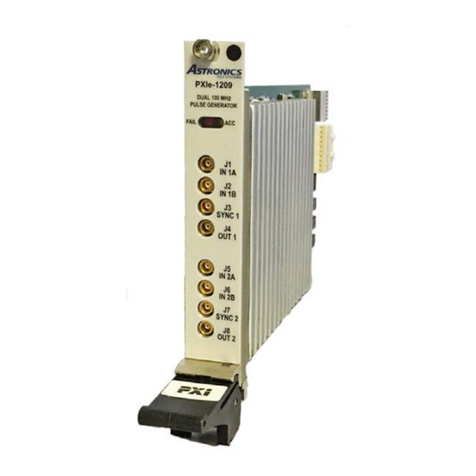
Astronics
Astronics PXIe-1209 user manual
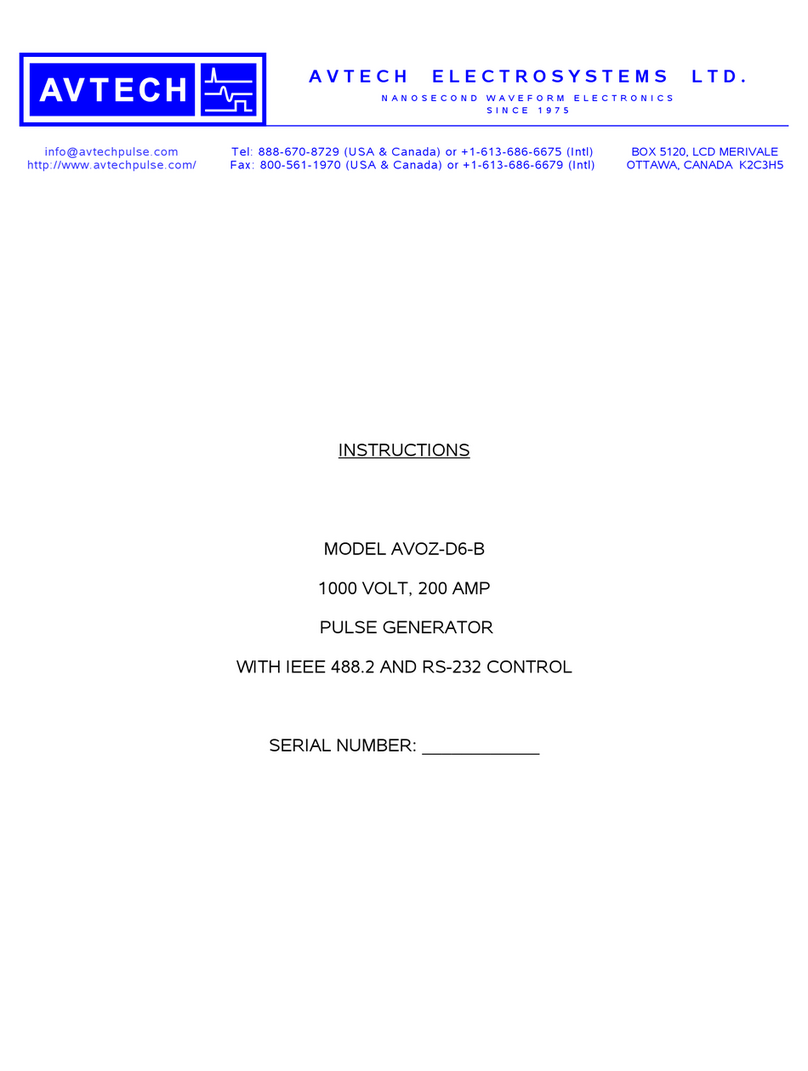
AVTECH ELECTROSYSTEMS LTD.
AVTECH ELECTROSYSTEMS LTD. AVOZ-D6-B instructions

Avtech
Avtech AVL-2D-B instructions
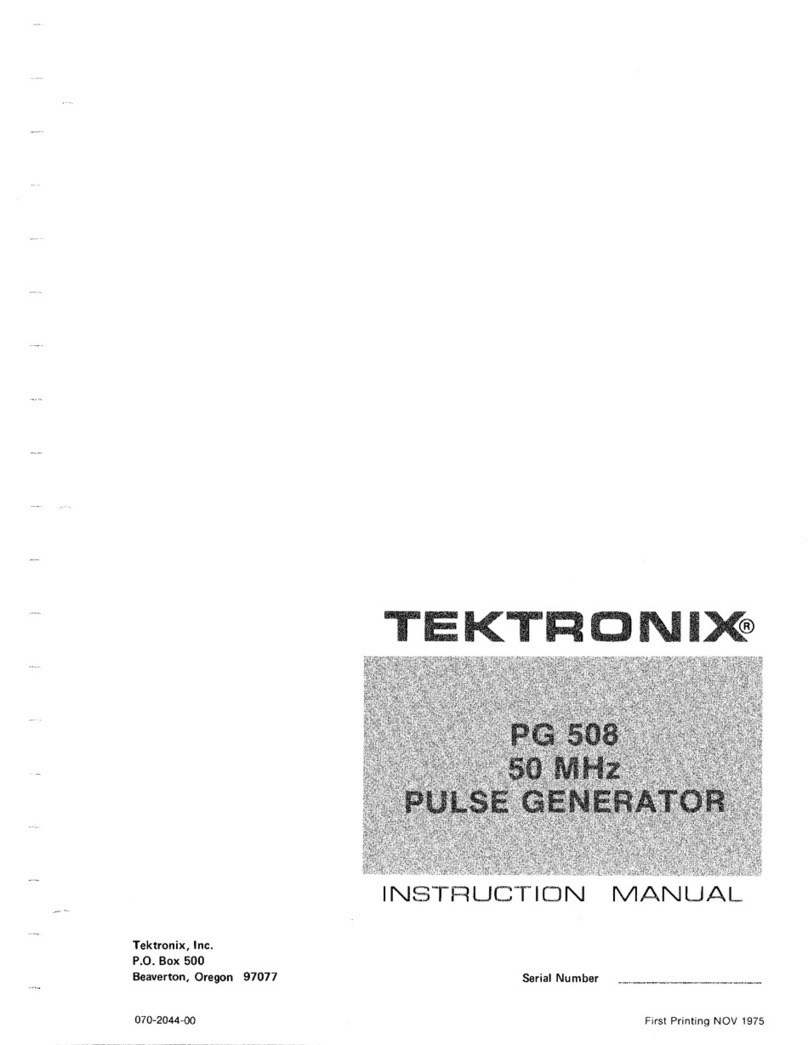
Tektronix
Tektronix PG 508 instruction manual

Global Specialties
Global Specialties 4001 Operation manual
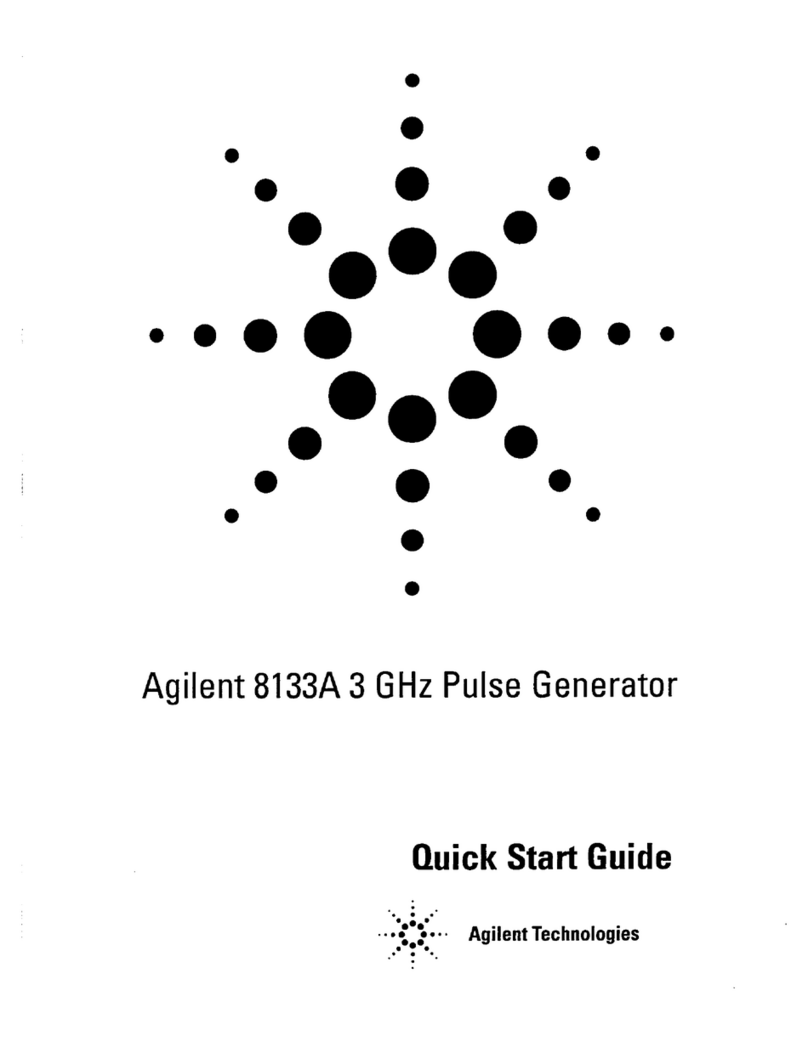
Agilent Technologies
Agilent Technologies 8133A quick start guide
